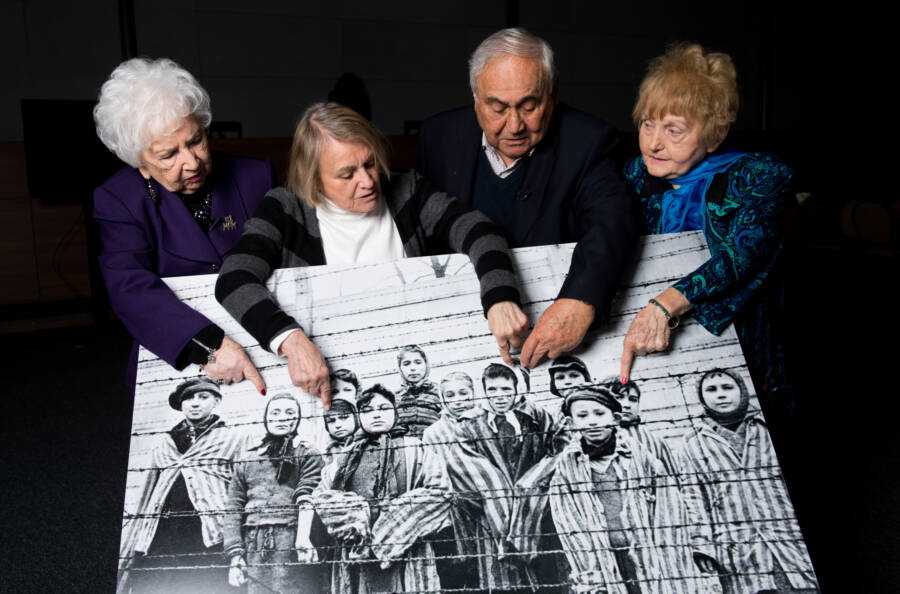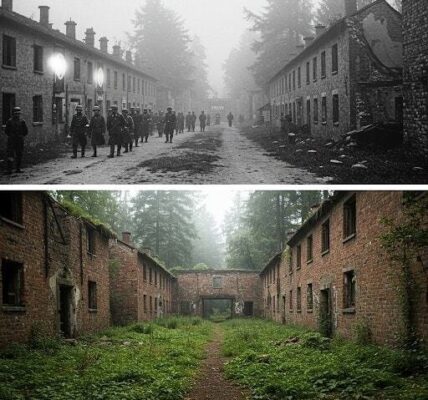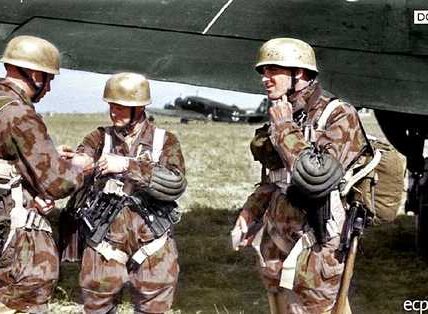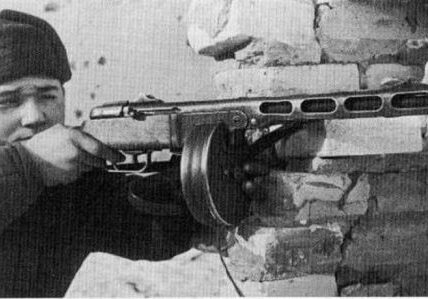Warning: This article contains graphic descriptions and/or images of violent, disturbing, or otherwise potentially distressing events.
As World War II ended in January 1945, a group of Soviet scouts stumbled upon a strange camp in the Polish city of Oświęcim, which the Germans called Auschwitz. The liberation of Auschwitz was not part of the soldiers’ plan, but would soon be considered one of the most defining events of World War II.
Auschwitz was established by the Germans in 1940 and quickly became the deadliest Nazi concentration camp. According to HISTORY , 1.1 million of the 1.3 million people deported to Auschwitz—a full 85 percent—died there. Hundreds of thousands were shot, gassed, hanged, and starved to death.

The entrance to Auschwitz, where an estimated 1.1 million people were killed by the Nazis during World War II.
Thousands more died in the camp’s final days as Nazi soldiers attempted to cover up their crimes and transfer some 60,000 prisoners to the German-occupied town of Wodzislaw. An estimated 15,000 people died during the bitterly cold death march, many of them shot by German soldiers as they tried to keep up.
But when Soviet soldiers entered the Auschwitz camp on January 27, 1945, they found those the Nazis had left behind: the seriously ill, children, and people who had managed to hide from the guards.
“Only the highest-ranking officers of the General Staff had perhaps heard of the camp,” Soviet soldier Ivan Martynushkin told The Times of Israel , noting that he and his comrades were surprised to find people behind the barbed wire. “We knew nothing.”
They discovered that up to 9,000 people were still in the camp and uncovered gruesome traces of the more than one million dead. The soldiers found 370,000 men’s suits, 837,000 items of women’s clothing, and nearly eight tons of human hair. According to HISTORY , they also discovered 44,000 pairs of shoes and 40 kilograms of eyeglasses.
But as terrible as the liberation of Auschwitz was, it was also a joy.
“We could see in their eyes that they were happy to have escaped this hell,” said Martynushkin. “Happy that they no longer faced death in the crematorium. Happy to be free.”
Ten-year-old Eva Mozes, who had been sent to Auschwitz with her twin sister the previous year, recalled Red Army soldiers distributing “hugs, cookies and chocolate,” according to HISTORY .
“We were not only hungry for food,” she said, “but also for human kindness.”
And Paula Lebovics, who was 11 years old when Auschwitz was liberated, recalled how overwhelmed she was by the Soviets’ kindness. She recalled a soldier approaching her with tears in his eyes and an offer of food. She told the USC Shoah Foundation that she thought, “You mean someone out there cares about me?”

Ian Gavan/Getty Images Paula Lebovics, second from left, stands with other Holocaust survivors and points to photographs of them as children during the liberation of Auschwitz.
The stories of Auschwitz were initially overshadowed by the liberation of the first major Nazi concentration camp, Majdanek. But as Auschwitz survivors told their stories and the world became aware of the full horror of the death camp, Auschwitz became known as the most notorious Nazi concentration camp of World War II.
After the war, the site was converted into a museum and memorial. The goal is to honor and remember those who died there, but also to keep the memory of the Holocaust alive as a warning for future generations.
“People should look at this place and think about their moral responsibility,” Pawel Sawicki, a guide at the Auschwitz Museum, told NPR . “This isn’t an anthropological discovery like, ‘Oh, people 75 years ago were capable of this,’ and we’re surprised. They’re still capable of this. They’ve done it before. And people still hate each other.”




